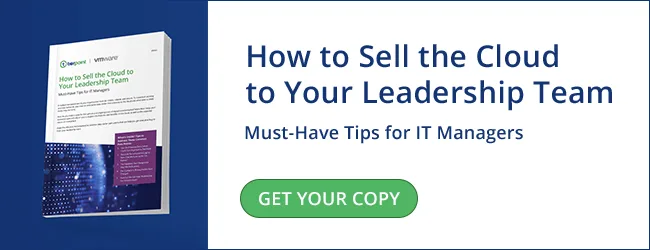
Managing cloud complexity can feel like trying to hit a moving target. Heterogeneity issues in a hybrid environment, legacy dependencies, security concerns, inconsistent use of cloud services during rapid growth, and issues stemming from cloud spending can all make cloud management more complicated. Understanding all of these variables and how to manage them is the first step toward quelling cloud complexity.
What is causing cloud complexity issues?
Cloud is inherently complex, but the difficulty increases with a hybrid infrastructure, which will include multiple clouds and environmental diversity. Businesses will need to understand the ins and outs of individual environments and the problems that come from integrating and managing a diverse mix of clouds and services.
Hybrid infrastructure diversity
Hybrid cloud infrastructure includes both cloud and non-cloud environments. For example, you might have a legacy on-premises data center you are working to integrate with public and private cloud services. With the incorporation of many different clouds and services, your business will require different tools and expertise to manage them.
While cloud tools can serve as a solution to complexity, the sheer plethora of options, particularly in the public cloud, can also add complications. Cloud tools can make your workload easier and add much-needed insight to your business processes, but they also require their configuration and set of knowledge and skills to work in harmony with your infrastructure.
Bringing in the right experts who know those particular tools and how they’ll work well in the environment will create smoother transitions and quicker cloud deployments. They can help you best use your cloud tools to:
- manage multiple clouds
- track budgets
- improve automation
- manage compliance
- provide real-time data
Visibility can also pose a problem – when you add more tools and environments, you may lose some visibility of what’s happening in specific parts of your infrastructure. Countering this also requires specific skill sets to help properly integrate and provide unified views of your hybrid architecture.
Legacy dependencies impede cloud transformation
While your organization may be actively working on digital transformation, modernizing is an ongoing process that can’t leave behind the pieces that came before. Legacy systems may carry dependencies that need to be considered when adding new clouds and services to the mix. While some may be relatively easy to incorporate or update, others may be time-consuming.
When dealing with legacy dependencies, you’ll want to think about the role these legacy frameworks play in your day-to-day business processes.
- What would need to be updated to fit into a new environment, the resources it would take, and how to approach it?
- Should it be left where it is until a new system can replace it?
- Will it play well and integrate with a new cloud system with some configuration, or is it not as essential as it once was and can be replaced quickly with something new?
Ignoring these questions can mean a slowdown or shutdown of essential business operations and subsequent losses in revenue, productivity, and important uptime.
Rapid growth
Rapid data growth and growth in AI, machine learning, and IoT mean navigating an evolving landscape of new technological possibilities.

Data growth
Total data worldwide has been on a constant upward trajectory, with no signs of slowing down. The acceleration is such that between 2022 and 2025, it’s expected to double, from 97 zettabytes to 181 zettabytes. In contrast, 10 years ago, total data stood at 2 zettabytes.
On an individual level, most organizations have similar issues with data bloat. Every tool you add is likely to capture data that can be used to develop insights if integrated and analyzed properly.
However, with these new data sources comes added complexity. How do you integrate all your systems? How can all your data sources be viewed in conjunction?
When handling lots of data, it’s also important to balance digging into the details and simultaneously not getting bogged down by minutiae. Cloud architecture is supposed to make your life easier, but with added access to data, management can become a challenge.
Growth of emerging technologies
Artificial intelligence, machine learning, and the internet of things (IoT) devices are growing at a rapid pace and will all require adequate infrastructure to function and further advance the way businesses operate.
Insider Intelligence predicts that by 2025, there will be 3.74 billion IoT mobile connections globally, with 64 billion IoT devices installed by 2026. These devices can be best supported with edge computing, which will require companies to think about where they need to house and process data to be closest to their customer base and their devices.
The market for artificial intelligence was at $93.5 billion in 2021 and is predicted to continue to have a compound annual growth rate (CAGR) of 38.1% through 2030. The machine learning market is also growing quickly. Currently valued at $21.17 billion, the market is projected to reach $209.91 billion by 2029, growing at a CAGR about equal to AI at 38.8%. These technologies can open the door to automation and other improved efficiencies but will require the right skills to implement properly.
Cloud market growth
You’re probably reading this post because cloud-based infrastructure is increasing in popularity, and you’re working on getting your organization on board, either by adding more environments, working to integrate what you have, or adopting a hybrid strategy.
The growth in the cloud goes hand-in-hand with increased cloud budgets, which we’ll address later on. By 2025, the public cloud computing market is estimated to reach $800 billion. Most enterprise cloud adoption in 2020 (76%) was on Amazon Web Services (AWS), and in 2020, 61% of businesses migrated workloads to the cloud. As cloud technologies become more commonplace, companies will have to learn how to implement, configure, and manage them effectively.
Cloud spend
Spending on cloud storage and computing has been increasing year-over-year, reaching $21.1 billion in Q4 2021 alone. This includes spending on both dedicated and shared environments. In total, 2021 saw $73.9 billion spent on the cloud, up 8.8% from 2020. Google Cloud Platform announced a price increase in March 2022 for some of its data storage-related core services, leading some to believe that compute cost increases are not far behind. Amazon Web Services has reduced its prices 107 times, but that doesn’t mean that the decreases are infinite.
Inflation is one factor that has led to higher cloud costs. The second factor stems from the effects still being felt due to the semiconductor shortage. Every time we hear news about the chip shortage, the timeline seems to get pushed out further. While it was initially projected to last through part of 2023, now Intel’s CEO is saying to expect the shortage to last through 2024.
Competing for finite resources, especially in an environment flooded with inflation, does not bode well for budgets.
Cost governance
Cost governance is, in part, setting up policies and procedures that protect your rates. You could restrict what virtual machine configurations are allowed on your account or what types of storage plans can be added to your account (cool, archive storage vs. hot tiers). You may also use cost governance to dictate where your data is housed. Without a governance strategy, costs can creep up.
Cloud culture clashes
Adopting new technology at an organization will be accompanied by different levels of supporters. There will be early adopters, people who jump on board once the kinks are worked out, and those who are reluctant to change. You may also find that between business units, the use of cloud services may vary. Inconsistent use of the cloud may also mean a difference of opinion on what is and isn’t valuable, or how to implement, integrate, or manage things.
Cybersecurity threats
Depending on the cloud model you choose, cybersecurity can be a significant concern. Private cloud infrastructure allows you to fine-tune security controls to match any required compliance you need to have in your industry, plus any internal standards and best practices you want to set. Having a specific approach is helpful if you have especially sensitive data – health information, personally identifiable financial data, and so on.

In a 2022 Checkpoint Cloud Security Report, 68% of respondents said that misconfiguration, one the main causes of cloud sprawl, was their biggest safety concern for public cloud services, followed by:
- Unauthorized access (58%)
- Insecure interfaces (52%)
- Account hijacking (50%)
Public cloud data breaches, on average, cost $4.8 million in 2021.
Even on a private cloud, if you don’t have the right protocols in place, and don’t train your staff on identifying potential threats, you set your organization up for the added risk. Cybercriminals are trying new things every year, and businesses with a high level of compliance failures see a cost difference of $2.30 million more on average per breach.
Hybrid cloud complexity makes security more complicated than it already is. Transferring data to the cloud can bring many security risks, including insider threats, malware, external attacks, misconfigured servers, insecure APIs, and compliance violations.
Each cloud provider has its approach to security infrastructure and compliance obligations. Differences in approach can leave businesses vulnerable to new categories of risks and challenges. Organizations need to leverage security best practices across all cloud environments and provide protection at each layer – data, applications, compute, network, perimeter, identity & access, and physical security.
It’s not uncommon to have personnel who aren’t skilled in the specifics of cloud security; hiring new workers can be an uphill battle. The current gap between cybersecurity workers available and those that are needed stands at around 2.7 million. While this gap is slowly closing (from 3.1 million in 2020 to 2.7 million in 2021), reaching equilibrium will take some time.
Steps businesses can take to overcome cloud complexity
Untangling complexity is a journey, much like it was for things to become complex in the first place. Taking small steps toward reducing complexity will lead to important cumulative results at the finish line. Starting is the most important step.
Create efficiencies where you can
You likely adopted a cloud infrastructure model for flexibility and convenience, and perhaps for cost savings as well. However, just adding cloud resources to the mix and not taking a strategic approach to the endeavor isn’t different from adding a new, shiny SaaS tool every few months that is only adopted by a couple of people.
Creating efficiencies where you can means figuring out the best execution venue (BEV) for individual workloads and processes, without compromising on flexibility and ease of use. Unify your various workflows under one cloud management platform. Once you determine execution venues, what’s the best way to carry them out?
Embrace a hybrid model
Complexities such as cybersecurity threats and bloated budgets can happen with any cloud model; however, hybrid cloud environments come with unique benefits that set them apart from any other cloud strategy. With hybrid cloud, you’re able to pick and choose what workloads go where in a way that fits your unique needs and goals perfectly.
Another approach to embracing a hybrid cloud model is to consider using cloud services like Managed Azure Stack. Managed Azure Stack provides a unified hybrid cloud experience by allowing you to run Azure cloud services on both public and private environments, integrated with end-to-end management in one of TierPoint’s 40 data center. This hybrid cloud approach gives businesses the benefits of high-performance hardware, robust hybrid cloud capabilities, scalable infrastructure, and advanced security features.
Of course, no model is immune to infiltration. It is worth saying that the cost of a data breach for hybrid cloud infrastructure is lower than public, private, and on-premises cloud models, coming in at $3.61 million on average (28.3% less than public cloud). Being intentional about where you place your data also correlates with lower costs associated with the risk of a data breach.
Also read: What’s The Secret to Accelerating Hybrid Cloud Adoption?
Offload some of your team responsibilities
Have you been trying to launch a migration project, but your team never seems to find the time? That may be a sign that you need to offset some of the responsibilities of your team, giving them to a third-party management service that can handle some of the day-to-day to-dos that can quickly and easily fill up a work week.
You can also use cloud partners or management tools, such as a cloud infrastructure management platform, to augment the skills you already have in-house. These offerings can serve as natural extensions to what you’re already doing.
Let your team do what they do best – growing and innovating in the business – and you’ll see strong returns that could help you continue to grow your team.
Strategize around your entire cloud infrastructure instead of looking at things one by one
From an infrastructure standpoint, this piece, paired with creating efficiencies, plays a hugely important role in saving you money and getting the most out of your cloud infrastructure. If you looked at one cloud in a hybrid model, one configuration, or one data set – you’re only getting part of the story. Zooming out and seeing trends, whether general or surprising, can help shape the direction you move in the future.
Form a cloud governance plan
Even if organizations manage to migrate to the cloud without a hitch, or perhaps, minor hitches, further complexity awaits in the governance and management of cloud technologies.
Cloud governance serves as a guidebook or manual for how everything should run in your cloud environment. Any protocols that should be created or updated to ensure compliance, performance, and safety would be included in cloud governance.

Creating a governance plan requires strong leadership and someone well-versed in any pitfalls that may occur with management. Not only does an expert or a team of experts need to write the rules, but they also need to be a plan for how to update rules when situations change.
Cloud governance can answer the following questions, and more:
- What roles and responsibilities does each person hold?
- How are other compliance standards being met that need to be considered alongside the cloud?
- What happens in a disaster? What are the business continuity and disaster recovery plans?
- When something goes wrong, what is the chain of command? After that, how are issues managed and mitigated?
Use containers
Containers are used to deploy and manage applications in the cloud, moving them from their physical environment to a cloud environment. Just like the name, containers serve as a self-contained vessel for what an application needs to run an application, without needing to be compatible with a particular platform.
Keeping things contained in this way also helps manage the consumption load across applications and keeps compatibility problems to a minimum. This can also be a place where a cloud partner can lend a valuable hand.
Uncover cost savings
Complexity also drives up the cost of the cloud. Once you have a better idea about what you do and don’t need in your cloud environment, you can determine the best cost options.
Public cloud charges are metered costs. Providers will track and charge for metrics such as your time, gigabytes, CPU use, and the number of executions. You could save money on the cloud by:
- Locking and controlling to prevent changes
- Implementing autoscaling of resources
- Auto shutdown of VMs (down at 10 p.m., back up at 7 a.m.)
- Creating term agreements with providers
You can save money on the private cloud by leaving more sensitive workloads in the private cloud, or configuring workloads to automatically push to the public cloud during spikes and high demand, then back to the private cloud when the demand returns to normal.
It’s time to reduce cloud complexity and modernize data center infrastructure
When you’re ready to address some of that cloud and IT infrastructure complexity, we’ll be here. Download our eBook – How to Sell Cloud Modernization to Your Leadership.

